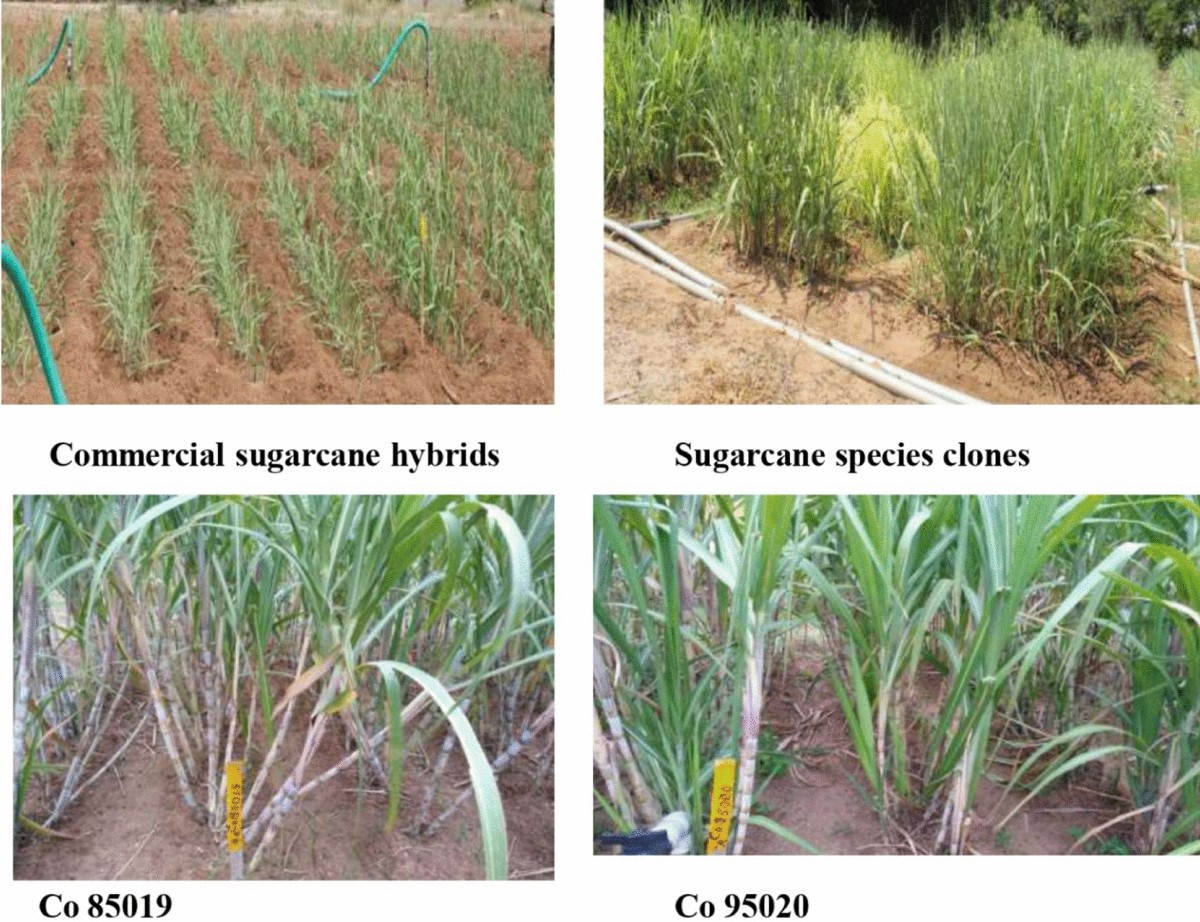Products From Sugarcane and Their Role in Reducing Carbon Emissions
Unlocking the Possible of Products From Sugarcane: a Comprehensive Overview
The capacity of sugarcane extends much past its traditional use for sugar manufacturing. This guide discovers the complex applications of sugarcane, from energy and biodegradable products to health products. By examining its journey from field to factory, it exposes exactly how sustainable methods can transform waste into useful sources. As markets look for green options, the concern stays: exactly how can these innovations reshape our strategy to farming and manufacturing?

The Trip of Sugarcane: From Area to Factory
Sugarcane undergoes an interesting improvement as it takes a trip from rich fields to dynamic factories. In the fields, the high, environment-friendly stalks are collected, usually by mechanical methods or manual work. When reduced, the sugarcane is promptly transported to refining facilities to assure maximum quality. At the factory, the initial step entails crushing the cane to draw out the wonderful juice, which contains sucrose. Products From Sugarcane. This juice is then filteringed system and clarified, removing contaminations. Following this, it goes through evaporation to focus the sugar content, bring about formation. The resulting sugar crystals are separated from the staying molasses with centrifugation. Finally, the sugar is dried out and packaged for distribution. Throughout this journey, maintaining quality and performance is vital, as the approaches used straight influence the product's last quality. This improvement not only highlights the agricultural relevance of sugarcane but likewise its substantial function in the global economic climate
Sugar and Its By-products: Greater Than Just Sweet taste
The transformation of sugarcane right into refined sugar unlocks to a large selection of products and applications that prolong beyond simple sweetness. Sugar and its derivatives, such as molasses, brown sugar, and sugar, play critical roles in various markets, consisting of food, pharmaceuticals, and cosmetics. In the food market, these active ingredients improve tastes, improve structure, and work as preservatives.Molasses, a by-product of sugar production, is abundant in nutrients, making it an important ingredient in natural food and animal feed. Sugar, a straightforward sugar acquired from sugarcane, functions as a considerable power resource in sporting activities nourishment and is crucial in the manufacturing of confectionery. Additionally, sugar derivatives are utilized in fermentation procedures, adding to the manufacture of liquors and various other microbial products. Generally, the versatility of sugar and its by-products highlights their relevance past mere sweet taste in day-to-day life.
Biofuels: Harnessing Power From Sugarcane

A substantial part of worldwide biofuel production now depends on sugarcane, acknowledged for its high energy return and effectiveness in transforming sunshine right into biomass. This exotic crop acts as a main source for ethanol, a sustainable gas that can change gasoline in cars. Sugarcane's capability to generate more ethanol per hectare than other feedstocks, such as corn, adds to its boosting popularity amongst biofuel producers.The fermentation procedure of sugarcane juice or molasses creates ethanol, which can be blended with fossil fuels to minimize greenhouse gas discharges. In addition, by using the recurring bagasse from sugarcane processing, energy can be produced through burning, more boosting the sustainability of biofuel manufacturing. As nations look for to mitigate environment change influences, sugarcane biofuels provide an encouraging remedy, boosting power protection and advertising agricultural sustainability while sustaining country economies.
Biodegradable Plastics: The Sustainable Different
Just how can sectors change to even more sustainable methods despite growing plastic pollution? One encouraging solution lies in eco-friendly plastics originated from sugarcane. Unlike standard petroleum-based plastics, these bioplastics offer an environmentally friendly choice that can significantly lower ecological impact. Made from renewable energies, sugarcane-based plastics break down a lot more swiftly in various conditions, lessening landfill buildup and marine debris.The production of naturally degradable plastics not just addresses waste monitoring difficulties however likewise lines up with the enhancing customer demand for sustainable items. Industries embracing these materials can enhance their brand name image while adding to a round economy. Additionally, the change to biodegradable options encourages innovation and financial investment in new innovations, promoting a greener market landscape.As much more firms identify the benefits of sugarcane-derived plastics, the capacity for prevalent fostering increases, leading the way for a more lasting future in packaging and item style.
Pet Feed and Fertilizers: Utilizing Results
The byproducts of sugarcane processing hold significant capacity for both pet nourishment and organic fertilizers. These results can be integrated into animal feed, giving essential nutrients while decreasing waste. In addition, they can act as efficient organic plant food options, improving dirt health and wellness and promoting lasting agricultural techniques.
By-products in Pet Nutrition
While sugarcane is primarily valued for its sucrose web content, its by-products play an important function in animal nourishment, particularly in the kind of pet feed and plant foods. The fibrous deposit understood as bagasse, produced during the removal of juice, functions as a beneficial resource of roughage for animals. This high-fiber product enhances digestion and advertises general wellness in ruminants. Additionally, molasses, a byproduct of sugar refining, is rich in energy and can be made use of to supplement animal diet plans, boosting palatability and nutritional value. Additionally, vinasse, a liquid byproduct from ethanol production, has necessary nutrients and can be utilized as a feed additive. Overall, sugarcane by-products contribute significantly to sustainable pet nourishment techniques.
Organic Fertilizer Options
Using sugarcane results extends past pet nourishment to incorporate natural plant food choices that profit farming methods. The fibrous deposits, such as bagasse and filter cake, act as efficient organic plant foods, enriching soil health and wellness and boosting plant returns. These products are abundant in nutrients, including potassium, phosphorus, and nitrogen, vital for plant development. When decayed, they boost dirt framework, water retention, and microbial activity, promoting a lasting farming ecosystem. Additionally, using sugarcane byproducts for fertilizing lowers dependence on artificial plant foods, advertising eco pleasant farming approaches. By reusing these byproducts, farmers can add to a round economic situation while maximizing their performance and lowering waste. This strategy exhibits cutting-edge approaches in lasting farming, leveraging sugarcane's complete possibility.
Wellness and Wellness: Nutritional Perks of Sugarcane
Numerous studies highlight the dietary benefits of sugarcane, making it a beneficial enhancement to a well balanced diet regimen. Rich in essential nutrients, sugarcane contains considerable quantities of vitamins, carbs, and minerals, specifically vitamin C, potassium, and calcium. These parts add to overall health and wellness, sustaining immune function and bone strength.Moreover, sugarcane is an all-natural resource of antioxidants, which help combat oxidative stress and anxiety and inflammation in the body. Its high fiber content help in digestion, advertising digestive tract wellness and protecting against irregularity. In addition, sugarcane juice has actually been connected to hydration and energy replenishment, making it a superb option for hop over to these guys athletes or those involving official source in laborious activities.Furthermore, the glycemic index of sugarcane is fairly reduced, permitting a much more steady release of power, which may be valuable for individuals handling blood sugar degrees. In general, including sugarcane into one's diet plan can supply a rejuvenating and nourishing option for health-conscious people.
Technologies in Sugarcane Products: Future Trends and Opportunities
What technologies lie ahead for sugarcane items as markets seek to improve sustainability and consumer allure? The future of sugarcane items is positioned for substantial innovations, driven by the need for green alternatives. Advancements in bio-based product packaging, stemmed from sugarcane, are gaining traction, offering a lasting substitute for typical plastics. In addition, the exploration of sugarcane's bioactive compounds is most likely to bring about new health supplements and functional foods, maximizing its all-natural benefits.Research into fermentation processes may generate novel biofuels, even more diversifying sugarcane's energy. Additionally, the development of genetically customized sugarcane varieties guarantees increased returns and resistance to pests, thus sustaining lasting farming techniques. As customers come to be more ecologically aware, the assimilation of transparency in sourcing and production methods will certainly also play an important duty in shaping the future of sugarcane items. Ultimately, these technologies could redefine sugarcane's placement in worldwide markets.
Frequently Asked Concerns
What Are the Environmental Effects of Sugarcane Farming?
The ecological influences of sugarcane farming consist of deforestation, loss of biodiversity, dirt degradation, and water air pollution - Products From Sugarcane. Furthermore, too much chemical and plant food usage can damage communities, while monoculture techniques might lead to decreased durability against climate modification
%20for%20sugar%20mills%20Manufacturer%20Netsol%20Water.jpg)
Just How Is Sugarcane Processed Into Different Products?
Sugarcane processing includes harvesting, additional reading squashing, and removing juice, which is after that clarified and focused. The resulting syrup can be fermented for ethanol or taken shape for sugar, while fibers are utilized for bioenergy and various other products.

Are There Any Type Of Wellness Threats Associated With Sugarcane Consumption?
The question of health and wellness dangers related to sugarcane usage highlights concerns such as excessive sugar consumption, potential allergies, and gastrointestinal concerns. Moderation is important to mitigate these dangers while enjoying its dietary advantages.
What Are the Economic Perks of Sugarcane Growing?
The economic advantages of sugarcane growing include work development, enhanced agricultural performance, and payments to neighborhood economic situations. Furthermore, it supports renewable resource production and offers numerous spin-offs that can boost productivity within varied markets.
How Does Sugarcane Contrast to Other Renewable Resources?
Sugarcane, as a renewable energy, demonstrates greater performance in biomass production contrasted to lots of alternatives. Its adaptability permits numerous by-products, adding notably to sustainable methods, financial development, and decreasing dependence on nonrenewable fuel sources. Sugar, an easy sugar acquired from sugarcane, serves as a considerable energy resource in sports nutrition and is important in the production of confectionery. Sugarcane's ability to create even more ethanol per hectare than various other feedstocks, such as corn, contributes to its increasing appeal amongst biofuel producers.The fermentation procedure of sugarcane juice or molasses generates ethanol, which can be blended with fossil fuels to minimize greenhouse gas emissions. Additionally, sugarcane juice has been connected to hydration and power replenishment, making it an excellent choice for professional athletes or those involving in arduous activities.Furthermore, the glycemic index of sugarcane is relatively low, allowing for a much more progressive launch of power, which might be advantageous for people taking care of blood sugar levels. In enhancement, the exploration of sugarcane's bioactive compounds is most likely to lead to new health and wellness supplements and useful foods, capitalizing on its all-natural benefits.Research right into fermentation processes may yield novel biofuels, even more expanding sugarcane's energy. The concern of wellness threats linked with sugarcane intake highlights concerns such as excessive sugar intake, prospective allergies, and intestinal problems.